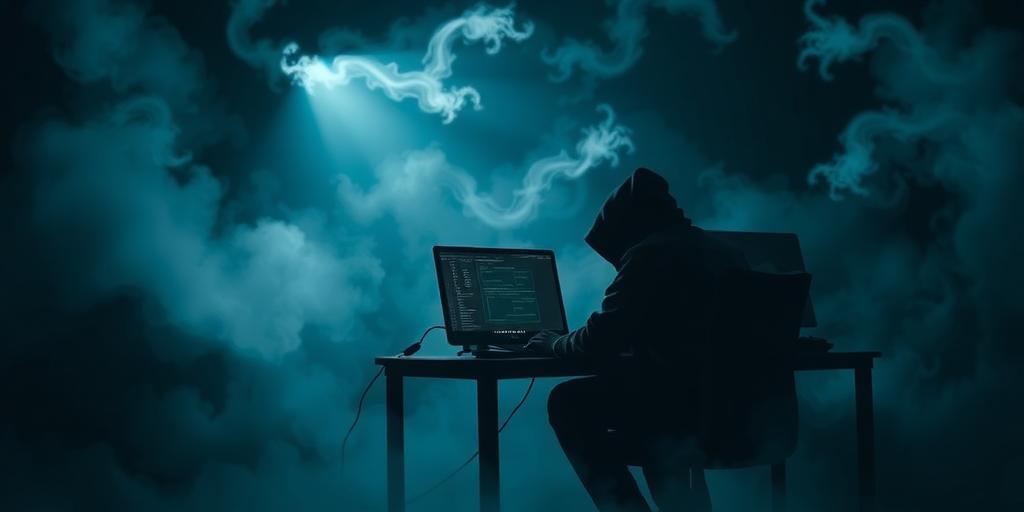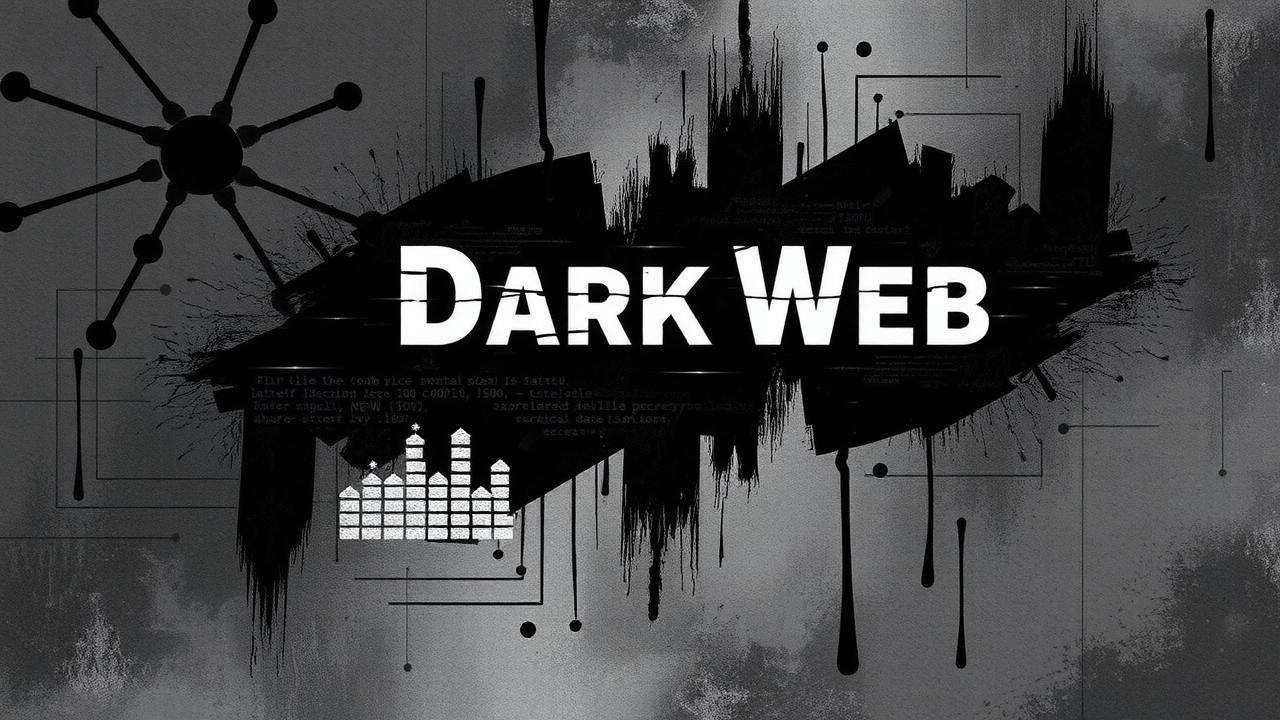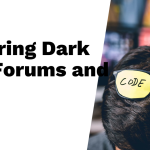The dark web refers to a part of the internet that is not accessible through regular browsers or search engines. It exists on special networks like Tor and I2P, which require specific software to enter and provide users with anonymity by encrypting data through multiple layers. Unlike the deep web, which includes all unindexed content such as private databases, the dark web specifically hosts hidden sites often ending with “.onion.” Originally developed from U.S. military research in the 1990s, it gained public attention with projects like Tor and marketplaces such as Silk Road. While much of its content involves illegal activities, it also supports privacy-focused communication for activists and journalists. Accessing it safely requires careful practices due to risks of scams and law enforcement monitoring. Looking ahead to 2025, evolving technologies promise better anonymity but also new challenges in regulation and security.
Table of Contents
- What the Dark Web Means and How It Differs from the Deep Web
- History Behind the Dark Web and Its Early Development
- How to Access the Dark Web and What Tools Are Needed
- What You Can Find on the Dark Web: Legal and Illegal Content
- How Cryptocurrencies Drive Dark Web Markets
- Risks Involved When Browsing the Dark Web
- How Law Enforcement Tracks and Polices the Dark Web
- Steps to Access the Dark Web Safely and Protect Your Identity
- Benefits and Drawbacks of Using the Dark Web
- What the Future Holds for the Dark Web in 2025 and Beyond
- Important Data and Facts About the Dark Web Today
- Tips for Individuals and Organizations Dealing with the Dark Web
- Frequently Asked Questions
What the Dark Web Means and How It Differs from the Deep Web

The dark web is a specific portion of the internet that exists on special encrypted networks known as darknets, which require unique software or permissions to access. Unlike the regular internet, or clearnet, the dark web is not indexed by standard search engines and is designed to keep users and site operators anonymous. This means you can’t just type a domain into a normal browser and find dark web sites; instead, you need tools like the Tor Browser, which routes your connection through multiple encrypted layers to hide your identity and location. A key feature of the dark web is its use of .onion domains, which are only reachable through compatible browsers that understand this address format. In contrast, the deep web includes all online content that isn’t indexed by search engines but isn’t necessarily hidden for anonymity. This covers things like password-protected pages, private databases, subscription services, or any site behind a login. While the deep web is vast and mostly harmless, the dark web is a smaller subset that operates on encrypted overlay networks such as Tor, I2P, Hyphanet, and Riffle, all built to provide privacy and concealment. Understanding this distinction is crucial: the deep web is about unindexed content, whereas the dark web is about anonymous and intentionally hidden services.
History Behind the Dark Web and Its Early Development

The dark web’s origins date back to the mid-1990s when the U.S. Naval Research Laboratory developed onion routing, a technique designed to protect government communications by routing data through multiple encrypted layers. This technology laid the groundwork for anonymous internet use. In 2002, the Tor Project was launched to make onion routing available to the public, allowing users to browse the internet anonymously and access hidden services. Early users of this technology were primarily activists, journalists, and whistleblowers seeking privacy rather than criminals. The landscape shifted significantly in 2011 with the creation of Silk Road, the first well-known dark web marketplace. Silk Road introduced a platform for trading illegal drugs using Bitcoin, which had emerged two years earlier in 2009, providing a method for anonymous digital payments. As cryptocurrencies evolved, privacy-focused coins like Monero and Zcash further enhanced transaction anonymity, fueling the growth of illicit trade. Law enforcement began to respond with operations like Onymous in 2014, targeting major marketplaces. Despite these crackdowns, dark web markets often reappear or evolve quickly, highlighting the ecosystem’s resilience. Over time, the dark web has grown into a complex environment balancing privacy rights, criminal activity, and legitimate uses, shaped by advancing technology and increasing public awareness.
How to Access the Dark Web and What Tools Are Needed

Accessing the dark web requires specialized tools designed to protect user anonymity and bypass regular internet restrictions. The most common way to enter this space is through the Tor Browser, which routes your internet traffic through multiple encrypted nodes operated by volunteers worldwide. This process, known as onion routing, adds layers of encryption making it difficult to trace your activity or location. Dark web sites use .onion addresses, unique cryptographic URLs that cannot be accessed by normal browsers or resolved via standard DNS. To avoid security risks, it is important to download the Tor Browser only from official sources, as fake versions may contain malware. For added privacy, many users employ a VPN before launching Tor to hide their internet service provider’s traffic and add another layer of protection. Disabling browser scripts and plugins is recommended since they can expose vulnerabilities or leak information. Some also prefer using virtual machines or dedicated devices to further isolate their dark web activities and reduce the chance of accidental data leaks. Since .onion sites are not indexed by traditional search engines, verifying addresses through trusted directories or community sources is crucial to avoid phishing or scam sites. Keep in mind that browsing speeds on the dark web tend to be slower and site availability can be intermittent due to the complexity of the network and frequent shutdowns. Maintaining strong operational security practices, such as avoiding personal details and regularly updating software, is essential to stay anonymous and secure while navigating the dark web.
What You Can Find on the Dark Web: Legal and Illegal Content
The dark web hosts a wide range of content, spanning both illegal and legal activities. On the illegal side, a significant portion involves marketplaces for drugs, weapons, and stolen data like credit card details or hacked accounts. Child exploitation material, although aggressively pursued by law enforcement, still appears on some sites. Cybercriminal services such as hacking-for-hire, malware distribution, ransomware kits, and phishing platforms are common as well. Terrorist groups sometimes use the dark web to spread propaganda and raise funds while avoiding detection. Scams and fraudulent schemes, including fake marketplaces and phishing operations, are widespread, making it a risky environment for the unwary.
However, the dark web is not solely a hub for crime. It provides important legal uses, especially for those needing privacy and security. Whistleblowing platforms like WikiLeaks offer secure channels for exposing sensitive information. Journalists and activists operating under oppressive regimes rely on the dark web to communicate safely, bypassing censorship and surveillance. Human rights organizations use these tools to collect evidence and coordinate efforts securely. Privacy-focused forums and niche communities thrive here, discussing topics often censored or marginalized on the regular internet. Additionally, academic and cybersecurity researchers study dark web markets and threats to better understand cybercrime and improve defense strategies.
How Cryptocurrencies Drive Dark Web Markets

Cryptocurrencies are the backbone of dark web markets, enabling pseudonymous transactions that help protect user identities. Bitcoin remains the most common currency, but its transparent blockchain makes full privacy tricky. This has led to a rise in privacy-focused coins like Monero and Zcash, which hide transaction details such as amounts, senders, and recipients, making tracing much harder. Many users also rely on mixers or tumblers, services that blend coins from multiple sources to obscure their origins further. Dark web marketplaces operate much like regular e-commerce sites, featuring product listings, user reviews, and escrow systems to hold funds securely until both buyer and seller fulfill their parts. These markets often use multi-signature wallets, requiring multiple parties to approve transactions, adding an extra layer of security. However, cryptocurrency volatility can influence pricing and trade volume, sometimes complicating business on these platforms. Law enforcement agencies focus on tracking cryptocurrency exchanges and mixing services to disrupt illicit money flows, but criminals continually adapt. Looking ahead, decentralized finance (DeFi) tools may become more common, offering new ways to anonymize and decentralize transactions on the dark web. Despite ongoing risks and crackdowns, cryptocurrencies remain essential for sustaining the dark web economy today.
Risks Involved When Browsing the Dark Web
Browsing the dark web carries several significant risks that users should be aware of before accessing it. Malware infections are common, with many sites hosting or distributing viruses, ransomware, and trojans that can compromise your device or steal sensitive data. Phishing scams and fake marketplaces frequently appear, aiming to steal login credentials, cryptocurrency, or personal information. Engaging with illegal content or attempting to buy illicit goods exposes users to serious legal consequences, including potential arrests. Deanonymization is another major risk, often resulting from operational mistakes such as revealing personal details, browser exploits, or IP leaks that can undo the anonymity the dark web promises. The limited and unreliable nature of dark web search engines means users may stumble upon malicious or fake sites, increasing exposure to scams or harmful content. Law enforcement actively monitors dark web activities and may use surveillance or sting operations to catch offenders. Technical challenges like slow speeds, frequent site downtime, and broken links also make navigation frustrating and sometimes risky. Additionally, users risk accidentally encountering disturbing or harmful content, which can have psychological impacts or expose them to social engineering and manipulation schemes. Because the dark web operates without regulation, there are no consumer protections or dispute resolution mechanisms, leaving users vulnerable to fraud and exploitation with little recourse.
How Law Enforcement Tracks and Polices the Dark Web
Tracking users on the dark web is a complex challenge because layered encryption and routing through multiple anonymous nodes make IP tracing nearly impossible. Law enforcement agencies rely heavily on open-source intelligence (OSINT) to gather clues from public and leaked data, social media, and informants. Undercover agents play a critical role by infiltrating marketplaces and chat communities to collect evidence and identify key operators. In some cases, specialized malware or network exploits are used to deanonymize users or reveal hidden servers. International cooperation, involving organizations like Interpol, enhances the effectiveness of these efforts by sharing intelligence and coordinating cross-border actions. Officers receive specialized training to analyze cryptocurrency transactions and understand the technical aspects of dark web technologies, enabling them to track financial flows and digital footprints more accurately. Large-scale operations such as Onymous and Bayonet have successfully taken down major darknet markets and arrested prominent figures, though these takedowns often lead to new markets emerging or shifting to more secure platforms. Collaboration with cybersecurity firms also supports law enforcement by providing threat intelligence and technical assistance. Despite these advances, challenges remain in balancing privacy rights with crime prevention, and law enforcement must continuously adapt to rapid technological changes to keep pace with evolving dark web threats.
Steps to Access the Dark Web Safely and Protect Your Identity
To access the dark web safely, start by downloading the Tor Browser only from the official Tor Project website to avoid malicious versions that could compromise your security. Before launching Tor, consider using a trusted VPN to hide your ISP activity and add an extra layer of privacy. Once inside Tor, disable JavaScript and other potentially exploitable features in the browser’s security settings to reduce the risk of attacks. Using a dedicated device or a virtual machine separate from your main system is highly recommended to contain any possible data leaks or malware infections. Avoid logging into personal accounts or sharing any identifying information while browsing to maintain anonymity. Always verify .onion addresses carefully using trusted directories or community recommendations to prevent falling prey to phishing sites. Keep your Tor Browser and any security tools updated regularly to patch vulnerabilities that could be exploited. Limit downloads, especially executable files, as these often carry malware that can compromise your device. Practice strong operational security by using different aliases, avoiding repeated behavior patterns, and staying alert to suspicious activities. When communicating on the dark web, using encrypted tools and PGP keys can help protect the content of your messages and identities. Following these steps does not guarantee complete safety, but they significantly reduce the risks associated with navigating the dark web.
- Download the Tor Browser only from the official Tor Project website to avoid malicious versions.
- Consider using a trusted VPN before launching Tor to hide your ISP activity and add a privacy layer.
- Disable JavaScript and other potentially exploitable browser features in Tor’s security settings.
- Use a dedicated device or virtual machine isolated from your main system to reduce risk of data leaks.
- Avoid logging into personal accounts or sharing identifying information while on the dark web.
- Verify .onion addresses carefully using trusted directories or community recommendations to avoid phishing.
- Regularly update your Tor Browser and any security tools to patch vulnerabilities.
- Limit downloads, especially executable files, to avoid malware infections.
- Employ strong operational security practices: use different aliases, avoid patterns, and stay vigilant.
- Consider using encrypted communication tools and PGP keys when interacting on the dark web.
Benefits and Drawbacks of Using the Dark Web

The dark web offers significant benefits for those seeking anonymity and privacy, especially in environments where free speech is restricted or surveillance is heavy. Activists, journalists, and whistleblowers rely on it as a secure channel to share sensitive information without fear of reprisal. For example, human rights defenders in oppressive regimes use the dark web to communicate securely and access uncensored news that is otherwise blocked. Beyond privacy, the dark web hosts niche communities and forums not found on the clearnet, allowing users to connect over shared interests or causes in a protected space. However, these advantages come with notable drawbacks. The dark web is notorious as a hub for illegal activities, including drug trafficking, weapons sales, and fraud. Because it lacks regulation, users face heightened risks of scams and malware infections, which can compromise their security or finances. Legal risks are also significant; simply accessing certain content or marketplaces can lead to criminal charges. Additionally, the technical nature of the dark web means browsing can be slow and unstable due to complex routing and frequent shutdowns by authorities. Even legitimate users often face suspicion because of the dark web’s association with crime. Ultimately, the dark web is a double-edged sword, providing vital protections for privacy and free expression while posing serious risks from illegal activity and operational challenges.
| Benefits | Drawbacks |
|---|---|
| Anonymity and protection for free speech, privacy, and whistleblowers | Hub for illegal activities and markets |
| Platform for activists and journalists under surveillance or censorship | High prevalence of scams, malware, and fraud |
| Access to niche, uncensored content and communities | Legal risks due to association with criminal acts |
| Facilitation of secure, anonymous communication | Slow and unreliable access due to routing and shutdowns |
What the Future Holds for the Dark Web in 2025 and Beyond
The dark web in 2025 and beyond is set to become more complex and fragmented as anonymity technologies evolve, especially with the adoption of post-quantum encryption to protect against future cyberattacks. Networks like I2P are likely to grow alongside Tor, creating a more diverse and resilient darknet ecosystem. Transactions will increasingly rely on privacy coins and decentralized finance tools to enhance anonymity, making it harder to trace digital footprints. Meanwhile, governments may push for stricter regulations, including demands for backdoors in anonymity software, which could spark conflicts between privacy advocates and authorities. On the corporate side, security firms will ramp up dark web monitoring to catch data leaks and cyber threats early. The dark web could also polarize into specialized hubs, with some focusing strictly on legal activities like secure communication for activists, and others continuing to harbor illicit markets. Law enforcement will advance their tactics and tools to better disrupt criminal operations, but users and markets will adapt quickly to new regulations and technologies. Although the dark web’s user base and size are expected to grow, it will remain a small slice of overall internet traffic. Emerging trends will keep reshaping the balance between privacy, security, and law enforcement efforts, making the dark web a continuously shifting landscape in the years ahead.
Important Data and Facts About the Dark Web Today
The dark web is a hidden part of the internet accessible only through special software like Tor and I2P, which route traffic through multiple encrypted layers to ensure anonymity. Unlike the deep web, which includes unindexed sites such as online banking or private databases, the dark web specifically hosts encrypted services often using .onion addresses that are not reachable via regular browsers. Emerging from U.S. Naval Research Laboratory projects in the mid-1990s, the dark web became publicly accessible with the launch of the Tor Project in 2002. It gained notoriety through marketplaces like Silk Road, where users traded illegal goods such as drugs, weapons, and stolen data using cryptocurrencies like Bitcoin, which offered a new level of transaction anonymity. Today, roughly 57% of dark web content involves illegal activities, including drug sales, hacking services, and extremist propaganda, but there are also legitimate uses. These include secure platforms for whistleblowers, journalists, activists, privacy-focused forums, and academic research. Cryptocurrencies remain the main currency, with privacy coins like Monero and Zcash growing in popularity, often combined with mixers to conceal transaction trails. Browsing the dark web tends to be slower than the regular internet due to its complex routing through multiple nodes, and sites frequently change domains or disappear because of law enforcement takedowns or operator choices. Law enforcement faces significant challenges in tracking users but employs undercover operations, malware, and international cooperation to dismantle marketplaces and arrest operators. Despite these challenges, millions use the dark web daily worldwide, where illicit goods can range in price: for example, stolen credit card details average around $125, while a week-long distributed denial-of-service (DDoS) attack service might cost about $350, reflecting an active and evolving underground economy.
Tips for Individuals and Organizations Dealing with the Dark Web
When navigating the dark web, individuals should always prioritize privacy and security. Using specialized browsers like Tor or I2P is essential, and combining them with a trusted VPN adds an extra layer of protection by masking your activity from your internet service provider. Maintaining strong operational security (OpSec) means avoiding sharing any personal information, disabling browser scripts to reduce exposure to exploits, and verifying .onion addresses through reliable sources to avoid phishing sites. It’s also wise to use a dedicated device or a virtual machine separate from your everyday computer to minimize the risk of malware infections, which are common on the dark web.
For organizations, dark web threats go beyond mere curiosity. Implementing dark web monitoring services can help detect compromised credentials, leaked sensitive data, or mentions of the company and its employees in illicit marketplaces and forums. Endpoint protection systems must be regularly updated, and employees should be educated about the risks tied to the dark web, including phishing scams and social engineering attacks that often originate there. Organizations should avoid any engagement with illegal activities and instead collaborate closely with cybersecurity firms and law enforcement to stay ahead of emerging threats while participating in threat intelligence sharing.
Researchers and journalists who rely on the dark web for sensitive sources or information should take additional precautions. Using advanced anonymity tools and secure communication protocols helps protect both their identities and the confidentiality of their work. Everyone interacting with the dark web must stay vigilant against scams and phishing attempts, carefully verifying communications and steering clear of untrusted marketplaces or services. Strengthening password policies, encouraging multi-factor authentication, and monitoring for compromised credentials that appear on the dark web are crucial steps for both individuals and organizations to reduce the risk of exploitation.
Frequently Asked Questions
1. What exactly is the dark web and how does it differ from the deep web?
The dark web is a part of the internet that isn’t indexed by search engines and requires special software, like Tor, to access. It’s a subset of the deep web, which includes all unindexed sites such as private databases and password-protected pages. The dark web is intentionally hidden and often used for anonymous communication.
2. How do people access the dark web safely without exposing their identity?
People use tools like the Tor browser to access the dark web because it routes their internet traffic through multiple servers, masking their IP address and location. Staying safe also means avoiding downloading files or clicking unknown links and keeping anonymity in mind during all interactions.
3. Are all activities on the dark web illegal or is there a legitimate use for it?
Not everything on the dark web is illegal. Many use it for privacy reasons, like journalists communicating with sources, activists avoiding censorship, or people living under oppressive regimes. While illegal activities exist, the dark web itself is a tool that supports anonymous communication and privacy.
4. What kinds of information or services are commonly found on the dark web?
The dark web hosts a variety of content such as private forums, encrypted messaging services, whistleblowing platforms, and marketplaces. While some marketplaces deal in illegal goods, others may focus on privacy-focused tools, cybersecurity information, and political activism resources.
5. How does the dark web maintain user anonymity and protect privacy compared to the regular internet?
The dark web uses networks like Tor which encrypt and relay user traffic through multiple nodes, making it very hard to trace the source. This layered encryption helps hide user identity and location, unlike the regular internet where IP addresses and browsing habits are more easily tracked by websites and ISPs.
TL;DR The dark web is a part of the internet that’s hidden and requires special tools like the Tor browser to access. It’s different from the deep web because it focuses on anonymity and encrypted networks. Originally developed for secure communications, it evolved into a place hosting both illegal markets and legitimate privacy-focused activities. Cryptocurrencies, especially Bitcoin and newer privacy coins, play a big role in dark web transactions. While it provides protection for free speech and secure communication, it also carries risks like scams, malware, and legal issues. Law enforcement continues to crack down on illegal operations, but the dark web adapts quickly. Moving forward, expect more advanced privacy tech, regulatory challenges, and growing corporate monitoring. Users should practice strong security measures if they choose to explore this complex and often risky space.





